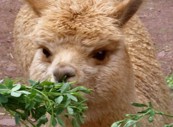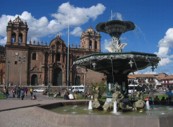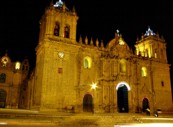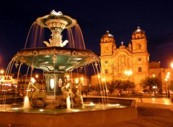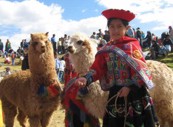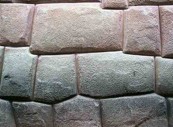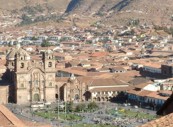Coricancha Information
|
The famous Sun Temple of Cusco was and is in practice a
synthesis of the Inkan organization, architecture and religion;
that had already reached the summit of their level by 1438. It
possibly represented the "Navel of the World"; therefore, the
world's center in the pre-Hispanic Andean Cosmovision. According to our history, it was the first Inka, Manko Qhapaq who built the original temple. But, it was the ninth, Pachakuteq who since 1438 reconstructed, enlarged, improved and modernized the most important religious complex of the vast Inkan Society. There are certain discrepancies about the complex's original name, and though they are not antagonistic ones, they cause a relative confusion. Frequently in chronicles and history treatises the name Intiwasi is found, (inti= sun, wasi= house) it means "Sun House"; also the name Intikancha is used and which would mean "Sun Palace" (this is considering that almost all Inkan palaces had the noun "Kancha"). While that its most popular name is Qorikancha that would mean "Golden Palace". Maria Rostworowski suggests that the ancient temple was known as "Intikancha" and after Pachakuteq as "Qorikancha". All the chroniclers coincide manifesting that the quality of the building was extraordinary, made with gray basaltic andesites coming from the quarries of Waqoto and Rumiqolqa. The walls have the "Sedimentary" or "Imperial Inkan" type that is the maximum expression of architecture in pre-Columbian America. The stones are between medium to large which outer surface is rectangular; the structure is straight horizontal that in the most important temples exhibit side views with marked convexity. The joints between stones are polished, so perfectly made that they do not allow insertion of even "razor blade". The cross section structure is "tied up", that is, with "H" shaped bronze clamps or clips in the internal joints that fastened together the lithic pieces avoiding harmful horizontal displacements in case of earthquakes. The wall also have a decreasing vertical structure, that is, with bigger stones in the lower part and every time smaller toward the top. The walls are wider in the base than on the top; with the classical inclination inward (there is not a general rule or measurement for that inclination) balanced with the trapezoidal shape of doorways, niches and openings. Those characteristics make the walls support themselves forming a resistant, solid, anti-seismic structure that was able to resist the two huge earthquakes after the Spanish invasion, in 1650 and 1950 that destroyed every tough colonial building. Today in some Inkan walls of the complex there are a few cracks. They are not a result of bad calculation or technique of the Quechua architects, but simply, consequence of changes carried out in colonial times, the earthquakes and mainly exposition to inclement weather and erosion after all of them. According to some studies the finely carved stone walls had a continuation of sun-dried mud-bricks on the top forming very steep gable ends in order to enable drainage of rain waters. The roofing was thatched made in wood and "ichu" the wild Andean bunch grass, with eaves projecting out about 1.6 mts. (5.25 ft); roofs which modest aspect was remedied in festivity days when they were covered with showy multicolored rugs made with special feathers. Gasparini believes that the often mentioned by chroniclers "gold edging" that served as a crown surrounding the whole outer upper side of the temple served, more over, in order to dissemble the difference between the fine stone wall and the upper adobe wall. The floor in the open areas of the temple must have been completely and finely paved with flagstones while the floors inside the enclosures were surely made with kilned clay as a solid ceramic block like the treated floors found in Machupicchu. The temple's main gate faced toward the Northeast; almost in the same position of the present-day entrance to the Santo Domingo (St. Dominic) Convent, overlooking the Intipanpa ("Sun Plaza") that today occupies the small park in front. According to chroniclers this was a religious complex constituted by temples dedicated to different deities. It had a layout very similar to that of a classical "kancha"; with enclosures around a central patio where according to Cieza de Leon, every doorway was veneered with gold plates. Cusco Travel Packages |
|
|
|
| Related Sites: Machu Picchu Hotels - Cusco Peru - Cusco Hotels | |
